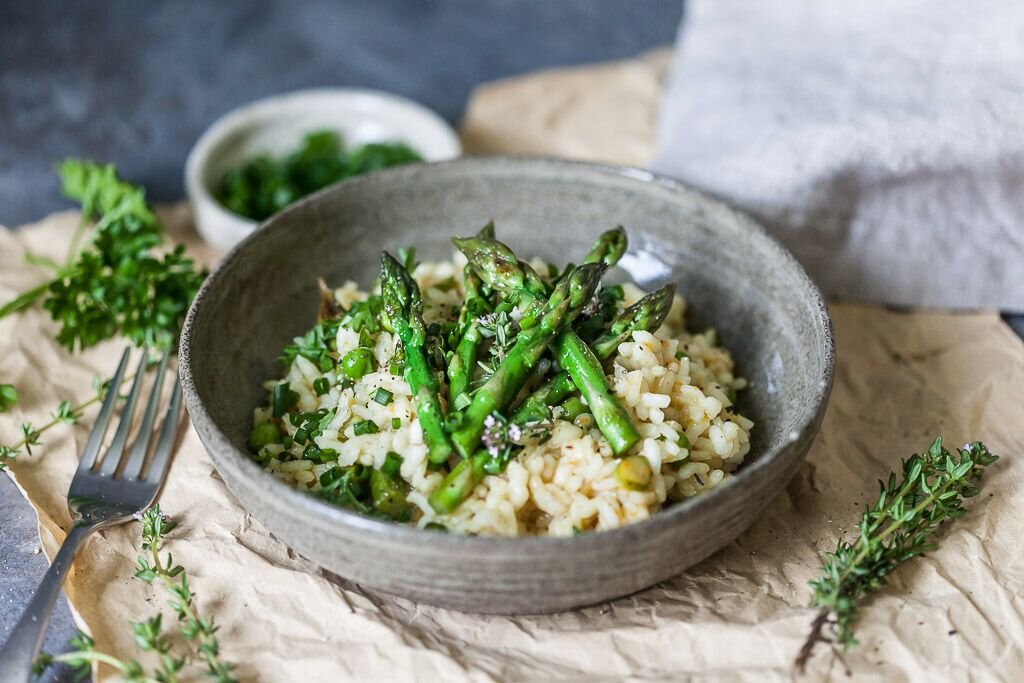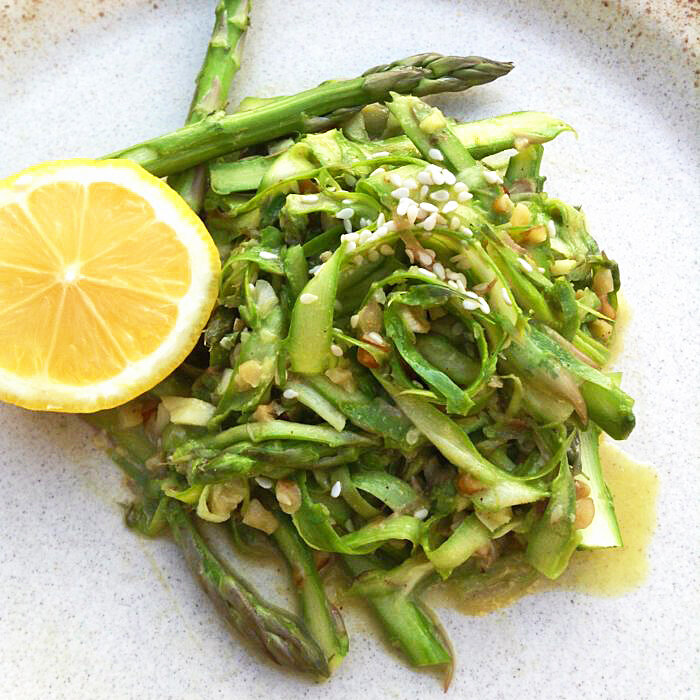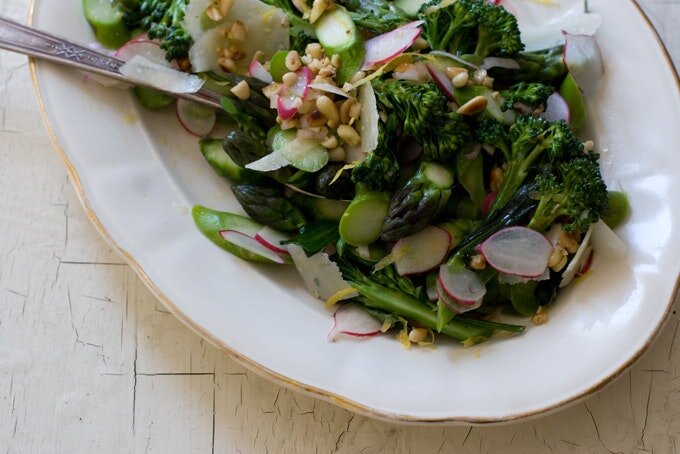Asparagus Officinalis
From the garden
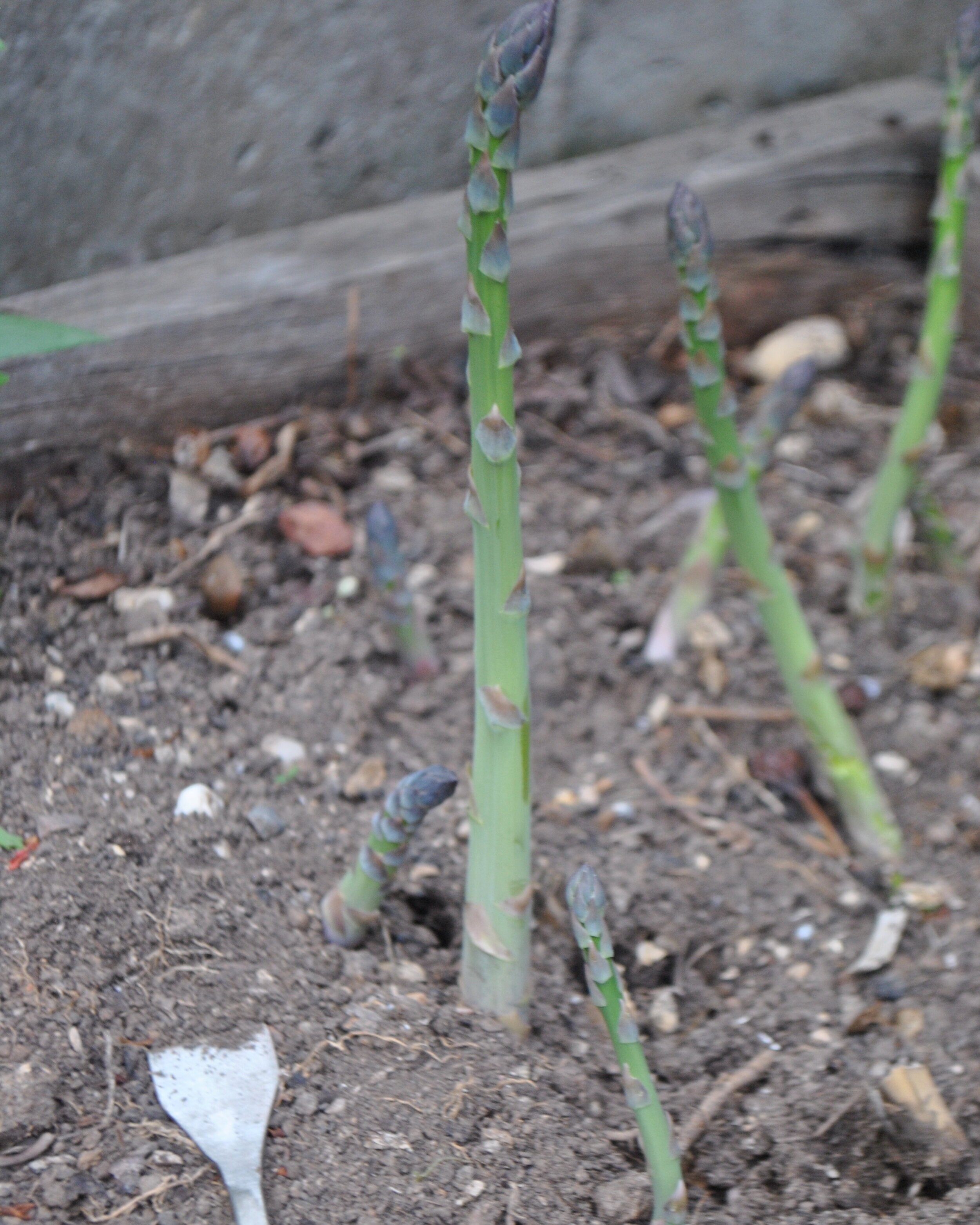
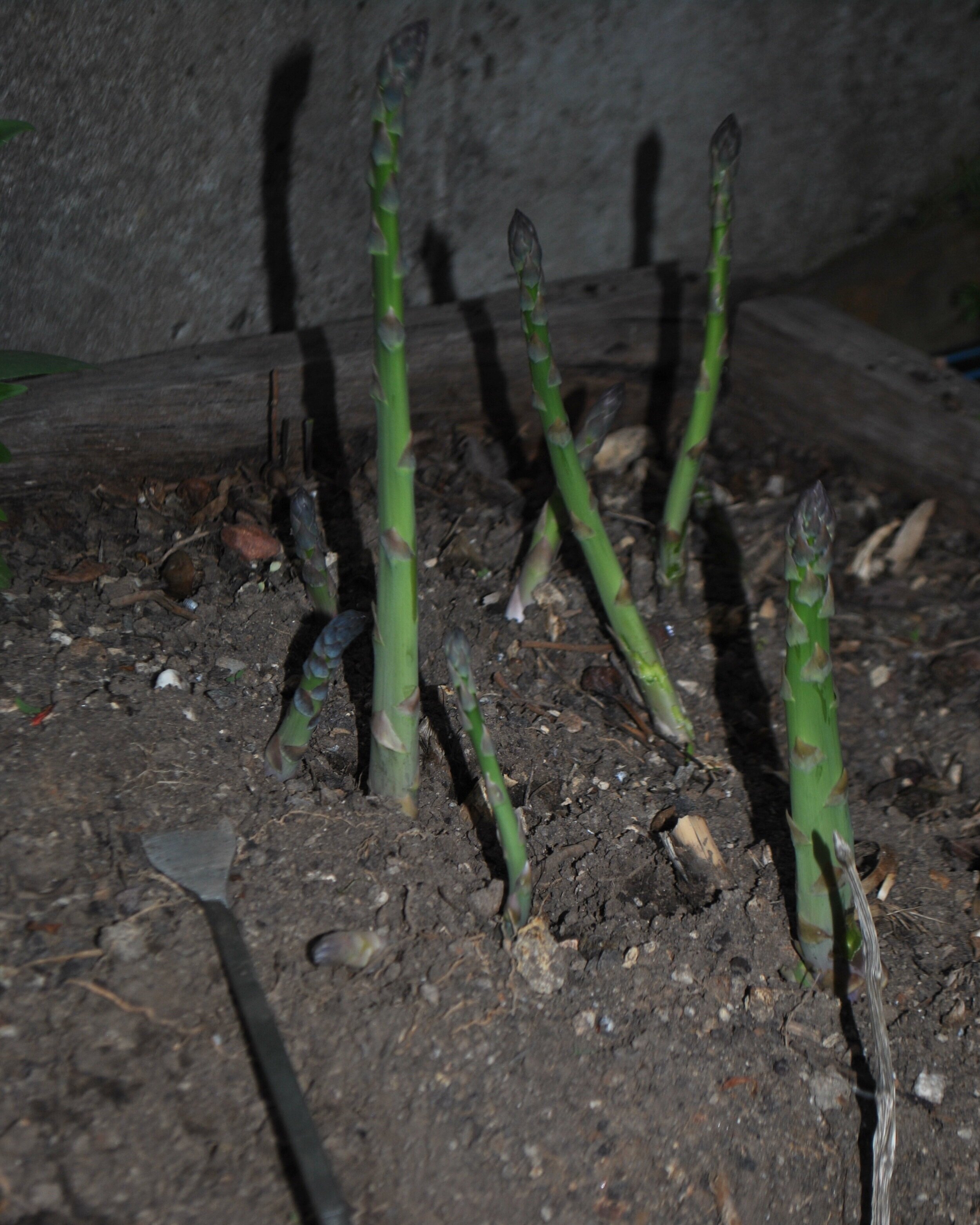

Annie Reeve, Woodend Permaculture Garden
Spring joy is ushered in by the prevalence of fresh, tender asparagus spears... in just about everything we eat. Asparagus is a perennial vegetable with approximately 15 - 20 yrs of productive life. Asparagus plants are big-feeders and develop a very large fleshy root structure. Therefore some foresight and effort into long term planting are required. To prepare asparagus beds select a sunny, well-drained location and enrich with plenty of compost and organic matter. Asparagus does not thrive if it is water-logged.
Asparagus comes in purple, green or blanched (which would usually be green-hilled asparagus and is considered a delicacy in Europe). Our preference is purple. In our opinion, it is the sweetest - though we are retesting this question this year.
The tenderness of asparagus can be tested by snapping off the end of the stalk at the natural snapping point as part of preparation. Because of this, asparagus is generally harvested with a knife underground and closest to the plant's crown to give a long stem.
With an established asparagus bed you should be able to harvest the spears for up to 6 weeks before letting the spears develop into fern-like fronds which are necessary for providing the energy which is stored in the underlying roots and thereby ensuring a good harvest for the following year. Therefore I recommend an incremental approach to harvesting in the first few years: year 1 harvest none; year 2 harvest for 3 weeks; etc. The fern-like fronds may require support to avoid damage to the asparagus crown in windy environments. When the fronds yellow in winter, no more photosynthesis will be taking place and they may be cut down to ground-level.
Be aware that snails love them and you may need to resort to snail pellets in order to avoid large losses to your crop.
To the table
Lucy Campbell, Veg Action
Asparagus is yet another veg filled with fibre and contains nutrients such as folate and vitamins A, C and K.
This is my first year getting a proper harvest of asparagus, as it’s been three years since we planted the crowns we got from Diggers. We bought two varieties: Mary Washington – which is green and pleasant tasting, and Purple Bastard – a cross between Purple and Fat Bastard varieties. The purple one really is a tasty bastard, I’ve usually eaten everything I pick before I get back to the kitchen.
Freshly cut asparagus starts losing its flavour and freshness within 24 hours so if you’ve just picked it, eat it asap. Otherwise, storage suggestions are to wrap the spears in a wet tea towel in the fridge or store upright in a jug of water. Fresh asparagus is so good you don’t really need any fancy recipe for it, just make sure to cut the woody ends off the asparagus spears before cooking. Best ways to consume this veg are by steaming and serving on toast, or barbequed with a drizzle of olive oil, lemon and some chili flakes.
You could also stir through a veg risotto, or toss with other greens through fresh pasta with a lemon Dijon dressing. For asparagus salad ideas, try this one from 101 Cookbooks or for a tasty plant based recipe, this lemony shaved salad would be delicious (nutritional yeast is available in the health food aisle in supermarkets, or in any health food store).
Other plants to harvest in October
Overwintered crops include: carrot, parsnip, beetroot, root parsley, broccoli, kale, Leeks, chard, lettuce, spinach, mache, escarole, endive or chicory. (Perennial crops) asparagus, lemons and other citrus, mint, lovage, salad burnet and parsley.

